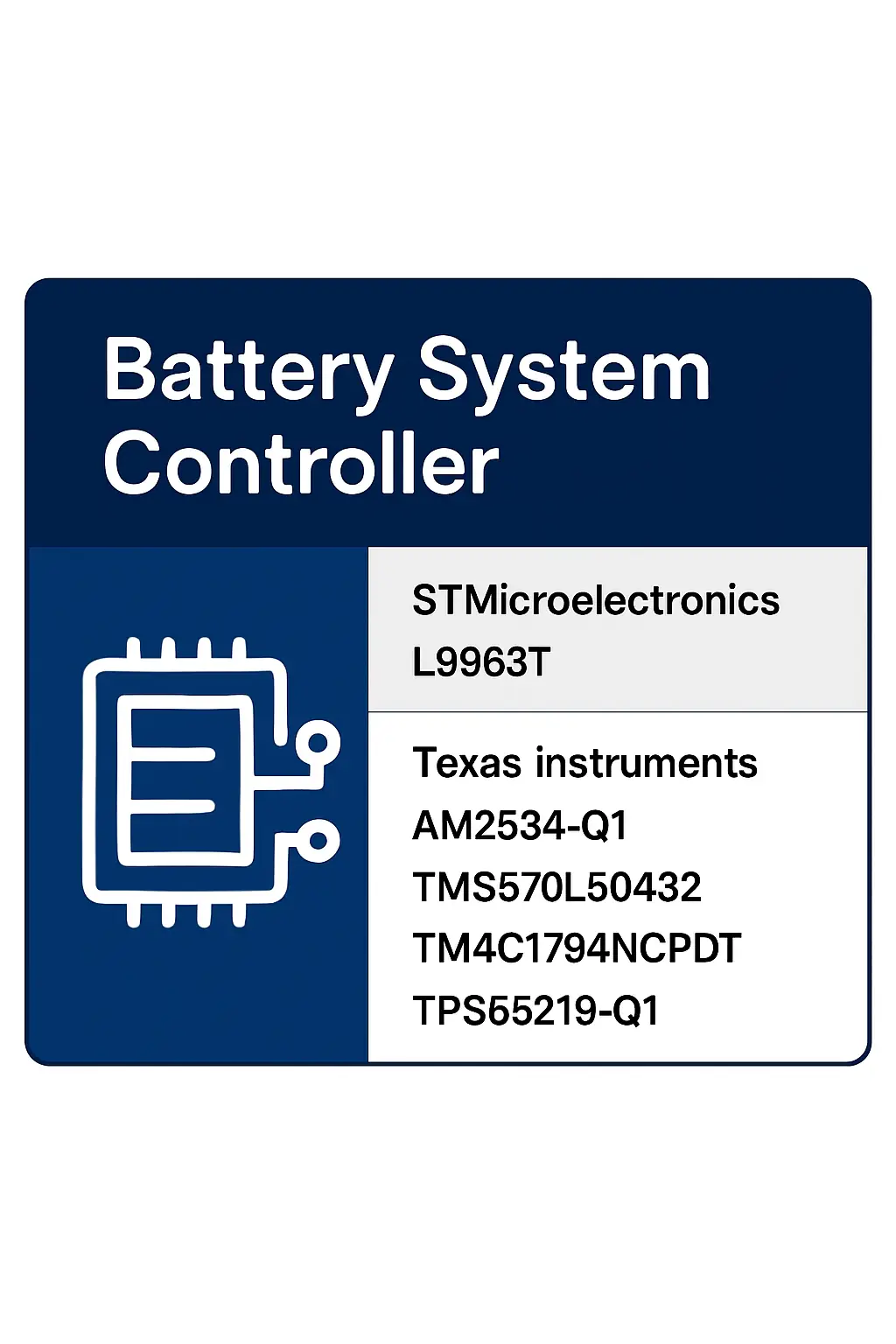Battery System Controller
The Battery System Controller (BSC) is a critical component within Automotive Electronics, specifically under the Electrification & Battery Systems domain. It plays a vital role in Battery Management Systems (BMS), ensuring the safe, efficient, and reliable operation of electric vehicle (EV) battery systems.
The BSC monitors and controls various parameters of the battery pack, including voltage, current, temperature, and state of charge (SOC). It communicates with other vehicle systems to optimize energy usage, manage charging processes, and protect the battery from overcharging, overheating, or deep discharging. This ensures extended battery life, improved performance, and enhanced safety.
Designed for use in electric and hybrid vehicles, the BSC is essential in applications such as electric powertrains, regenerative braking systems, and energy storage solutions. It supports advanced features like thermal management, fault detection, and communication with the vehicle’s central control unit.
By integrating seamlessly into the broader Automotive Electronics ecosystem, the BSC contributes to the development of more sustainable and efficient transportation solutions. Its role is crucial in enabling the transition to electrified mobility, supporting both consumer and commercial vehicle markets. Whether in passenger cars, buses, or industrial equipment, the BSC ensures the stable and intelligent operation of modern battery systems.
Details
Battery System Controller

Related Parts
| Series Name | Description | Manufacturer Name | Attribute Description |
|---|---|---|---|
| STMicroelectronics | 36V, 1.5A half-bridge driver, 10V UVLO, 45V load dump, SPI interface, 64LQFP package, operates from -40°C to 150°C, integrated charge pump, fault protection, suitable for automotive battery management. | ||
| Texas Instruments | 32-bit RISC-V cores, up to 800 MHz, 4x CPU cores, 4MB Flash, 1MB RAM, -40°C to 125°C junction temp, 0.8V–1.2V core voltage, supports ASIL-D functional safety. | ||
| Texas Instruments | 32-bit ARM Cortex-R5F core, 180 MHz, 2MB flash, 192KB RAM, 12-channel DMA, ECC memory, 12-bit ADC, multiple CAN, SPI, UART, LIN, I2C interfaces, safety-critical features, -40°C to 105°C. | ||
| Texas Instruments | 32-bit ARM Cortex-R4F core, 80 MHz, 512 KB flash, 96 KB RAM, 1.2V core / 3.3V I/O, -40°C to 105°C, 12-bit ADC, CAN, SPI, UART, LIN, ECC memory, lockstep flash, safety-compliant. | ||
| Texas Instruments | 32-bit RISC-V MCU, 4x 800 MHz cores, 4MB flash, 1MB RAM, Ethernet, CAN FD, USB, 16-bit ADC, up to 1200 DMIPS, safety & security features, -40°C to 125°C. | ||
| Texas Instruments | 32-bit ARM Cortex-M4F, 120 MHz, 1MB Flash, 256KB RAM, Ethernet, USB, CAN, UART, SPI, I2C, ADC, 160 GPIO, 2.5V-3.3V, 100-pin LQFP | ||
| Texas Instruments | Input voltage: 4.5V to 65V; Output current: up to 1A; Switching frequency: 50kHz to 1MHz; Efficiency: up to 95%; Features: integrated high-side MOSFET, current-mode control, adjustable soft-start. | ||
| Texas Instruments | 3.3V/5V input, 3A/2A/1.5A output, 2.1MHz switching frequency, integrated FETs, adjustable output, overcurrent and thermal protection, small 3mm × 3mm QFN package. | ||
| Texas Instruments | 3.3V/5V input, 6-output PMIC, dual 2A buck converters, 1.8V/3A LDO, I2C interface, spread-spectrum control, -40°C to 125°C junction temperature, 64-pin HTQFP package, automotive grade. | ||
| Texas Instruments | 3.3V/5V input, 3A/2A dual buck converters, 1.8V/3.3V LDOs, I2C control, -40°C to 125°C, 40-pin HTQFP, integrated FETs, automotive grade. |








.png?x-oss-process=image/format,webp/resize,h_32)










